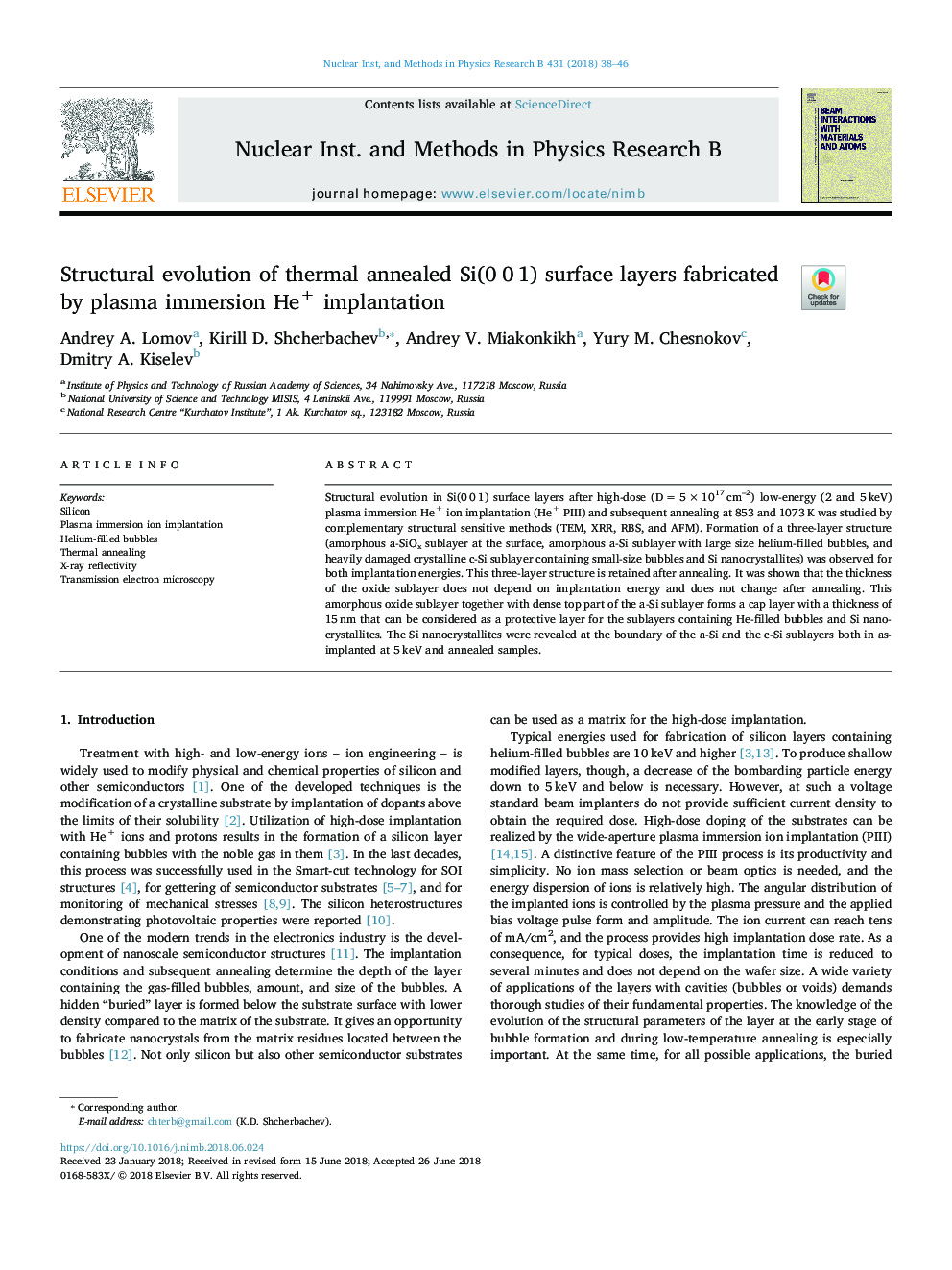| Article ID | Journal | Published Year | Pages | File Type |
|---|---|---|---|---|
| 8039057 | Nuclear Instruments and Methods in Physics Research Section B: Beam Interactions with Materials and Atoms | 2018 | 9 Pages |
Abstract
Structural evolution in Si(0â¯0â¯1) surface layers after high-dose (Dâ¯=â¯5â¯Ãâ¯1017â¯cm-2) low-energy (2 and 5â¯keV) plasma immersion He+ ion implantation (He+ PIII) and subsequent annealing at 853 and 1073â¯K was studied by complementary structural sensitive methods (TEM, XRR, RBS, and AFM). Formation of a three-layer structure (amorphous a-SiOx sublayer at the surface, amorphous a-Si sublayer with large size helium-filled bubbles, and heavily damaged crystalline c-Si sublayer containing small-size bubbles and Si nanocrystallites) was observed for both implantation energies. This three-layer structure is retained after annealing. It was shown that the thickness of the oxide sublayer does not depend on implantation energy and does not change after annealing. This amorphous oxide sublayer together with dense top part of the a-Si sublayer forms a cap layer with a thickness of 15â¯nm that can be considered as a protective layer for the sublayers containing He-filled bubbles and Si nanocrystallites. The Si nanocrystallites were revealed at the boundary of the a-Si and the c-Si sublayers both in as-implanted at 5â¯keV and annealed samples.
Keywords
Related Topics
Physical Sciences and Engineering
Materials Science
Surfaces, Coatings and Films
Authors
Andrey A. Lomov, Kirill D. Shcherbachev, Andrey V. Miakonkikh, Yury M. Chesnokov, Dmitry A. Kiselev,
